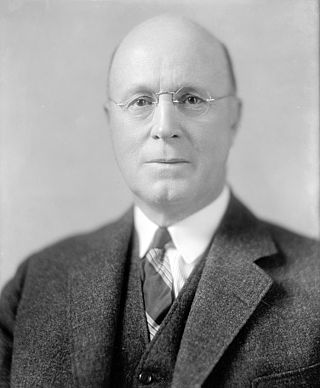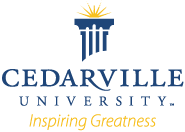
Elko is a city in the U.S. state of Nevada and the county seat of Elko County. As of the official 2020 U.S. Census, the city has a population of 20,564. Elko serves as the center of the Ruby Valley, a region with a population of over 55,000. Elko is 21 miles (34 km) from Lamoille Canyon and the Ruby Mountains, providing year-round access to recreation, including hiking, skiing, hunting, and more than 20 alpine lakes. The city straddles the Humboldt River. Spring Creek, Nevada, serves as a bedroom community 6 miles (10 km) from the city with a population of 13,805.

Tasker Lowndes Oddie was an American attorney and politician who served as the 12th Governor of Nevada and a United States Senator. He was a member of the Republican Party.

The University of Nevada, Reno is a public land-grant research university in Reno, Nevada. It is the state's flagship public university and primary land grant institution. It was founded on October 12, 1874, in Elko, Nevada.

Cedarville University is a private Baptist university in Cedarville, Ohio. It is chartered by the state of Ohio, approved by the Ohio Board of Regents, and accredited by the Higher Learning Commission.

Central State University (CSU) is a public, historically black land-grant university in Wilberforce, Ohio, United States. It is a member-school of the Thurgood Marshall College Fund.

William Alexander Massey was an American politician who served as a member of the United States Senate from Nevada.
Thomas L. Schwenk retired August 31, 2021 as dean of the School of Medicine at the University of Nevada, and vice president of health sciences at the University of Nevada, Reno. He now holds the position of Dean Emeritus at the University of Nevada, Reno, as well as an appointment as Professor Emeritus at the University of Michigan Medical School.
William Watt was a California Gold Rush mining executive, California State Senator, Regent of the University of California, Director of the Nevada County Narrow Gauge Railroad, and owner of the Grass Valley Telegraph, the first newspaper in that town.

John Collins Covell was a 19th-century American educator and school administrator specializing in deaf education in the U.S. states of Virginia and West Virginia.

Henry Bell Gilkeson was an American lawyer, politician, school administrator, and banker in West Virginia.
Samuel Fowler Butterworth was an American attorney, businessman, and honorary regent of the University of California.

John Ohleyer Moseley was an American educator, a Rhodes Scholar, and a professor of Latin at the University of Oklahoma in the 1920s. He was also the President of the Sigma Alpha Epsilon fraternity in the 1930s. He served as the President of Central State College from 1935 to 1939, and the University of Nevada, Reno from 1944 to 1949.
Hank M. Bounds is an American educator and a past president of the University of Nebraska system, where he was the administrator of all campuses in the university. He had previously served as the commissioner of higher education in Mississippi.
Joseph Neil Crowley was the 13th president of the University of Nevada, Reno from 1978 to 2001 and interim president from 2005 to 2006 and was the longest-serving president at the university and cannabis advocate. He was a member of the Democratic Party.
Malcolm Andrews Love was the eighth president of the University of Nevada (1950–1952) and the fourth president of San Diego State University (1952–1971).

Benson Dillon Billinghurst, often known using his initials as B.D. Billinghurst, was an American educator in Nevada during the early 20th century. Born in Ohio in 1869, he served as the Superintendent of Schools of the Washoe County School District from 1908 until his death in 1935, and was famous for his school building projects, his expansion of the availability and quality of Reno education, the introduction of junior high schools to Nevada, and his influence in education laws and the establishment of the Nevada State Textbook Commission.
Mae Caine was a 20th-century American suffragist and women's rights activist, civic leader, and government official in Nevada. President of the Suffrage Society in Elko County, she was also a vice president of the Nevada Equal Franchise Society, and a delegate from Nevada to the 45th convention of the National American Woman Suffrage Association in Washington, D.C.

Noble Hamilton Getchell (1875-1960) was an American miner and politician from Nevada. He served five consecutive terms in the Nevada State Senate from 1922 through 1942. He also served in the Arizona State Senate from 1917 through 1918, during the 3rd Arizona State Legislature. He was the chairman of the Nevada Republican Committee for 12 years, followed by 13 years as the National Committeeman for the Republicans in Nevada. He was in the mining field, doing exploration and development in Alaska, Colorado, Arizona, Washington, and most significantly in Nevada. The mineral Getchellite is named after him, and for several decades, until its demolition in 2013, the library at the University of Nevada was named after him.

Horace Morrison Hale was an American educator and academic administrator who served as the second president of the University of Colorado from 1887 to 1892. He previously served as Colorado's first State Superintendent of Public Instruction from August 1876 to January 1877.












